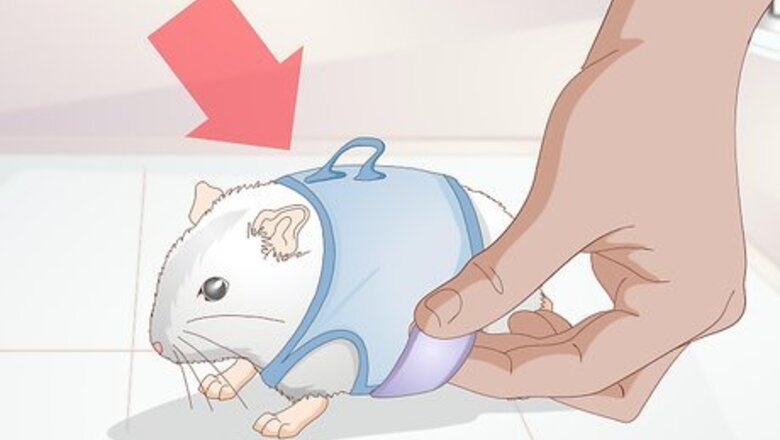
views
Walking Your Hamster
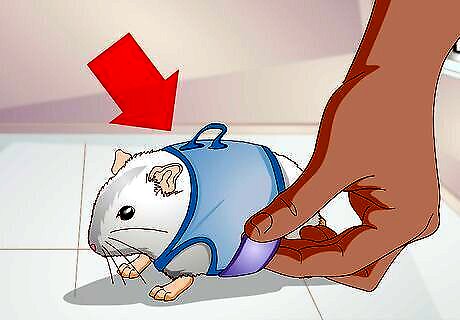
Choose a safe, snug harness. There are plenty of small animal harnesses available at your local pet store or online. It may be worth visiting the store first to familiarize yourself with the different options and sizes that are available. You’ll likely need the smallest harness you can find, as animals the size of hamsters are not commonly walked. Go with a harness that fits snugly, without impeding the hamster's breathing or movement. Velcro is the best type of clasping mechanism. Velcro is secure enough to contain even the strongest of hamsters and is much safer than buckles or other clasping mechanisms. Never use a collar on a hamster.
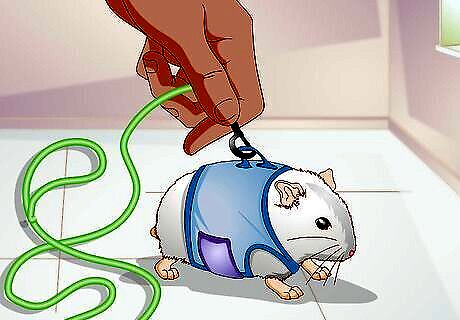
Opt for a lightweight cord or leash. Most leashes that are made for walking a pet are dangerously heavy for use with hamsters. Many also have heavy clasps at the end that will also endanger your hamster. Unless you can find an extremely light leash with a simple, light clasp, opt for a simple cord instead. Para/Military cord or “paracord” is perfect, as its light and strong. Simply tie the cord to your hamster’s harness. Never tie a cord or anything else directly around your hamster’s neck.
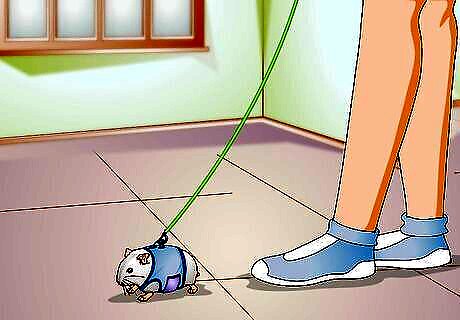
Favor indoor walks. Walks outside will vastly increase the risks your hamster faces. Other people’s pets and many types of birds will likely attempt to kill your hamster. Further, since hamsters are so small and fragile, they could easily be accidentally injured by someone who doesn’t see it. The best place to walk your hamster is in a sparsely populated, well-confined area, like a hallway. If you do walk them outdoors, stay away from areas where other pets might be walked, such as sidewalks. A lap around your yard is probably safest and will be quite the adventure for your hamster.

Walk your hamster slowly. Your hamster’s walking pace is much, much slower than your own. While hamsters can quickly dart around for short distances, it will not be able to keep a steady pace with you at your regular walking speed. According, walk very slowly beside your hamster. Moving too quickly also increases the chances that you will accidentally injure your hamster.
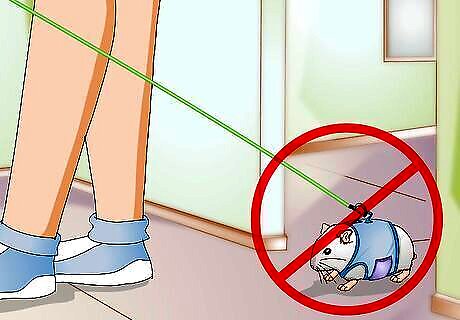
Do not abuse your hamster. Hamsters are extremely light creatures. Never jerk, yank, or pull too heavily on the leash. Do not attempt to drag your hamster along if they don’t want to proceed with a walk. Finally, do not swing the hamster around in its harness. Though it looks fun, this terrifying for your hamster and risks breaking its neck and back.

Use treats to motivate your hamster. While formal training is an unproven practice in hamster rearing, treats can definitely help keep your hamster walking. Positively reinforce the behavior you want the hamster to continue by giving them treats. This will let them know they should keep walking, for instance. Opt for healthy treats. Favor celery, carrots, apples, or broccoli. Avoid pitted or citrus fruits and spinach. Do not feed your hamster more than a bouncy-ball-sized portion of greens per day.
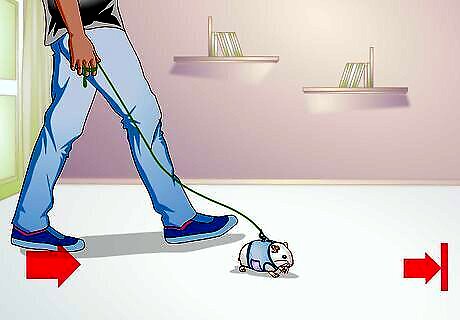
Keep walks short. Think about the size of a hamster step versus one of your own steps. They’re taking dozens of steps for each step you take! Accordingly, keep walks short. Further, let your hamster rest whenever they wish to stop walking. If they simple stop, conclude the walk by picking up your hamster and returning them to their enclosure. Bring your hamster’s water bottle with you on walks. Make it available to them whenever they stop by holding it for them to drink from. While wild hamsters get most of their water from fruits and veggies, your hamster is likely used to drinking from a bottle.
Choosing Safer Alternatives

Weigh the risk of walking. Even with a properly fitting harness and lightweight leash, hamsters can very easily be injured during a walk together. Hamsters are extremely light and fragile. You may simply accidentally pull too hard or move your hand without thinking and seriously injure your hamster. Furthermore, you cannot control the environment outside of your home. Even in a seemingly safe hallway, a dog might unexpectedly appear and make quick work of your pet. You may even accidentally step on your hamster during a walk. A hamster may unknowingly scurry right beneath your foot before you put your weight down. Outside, there are innumerable dangers to your hamster. You may come across a predatory bird who will never get an easier meal if it decides to attack. Further, your hamster may put themselves at risk by eating something dangerous off of the ground.
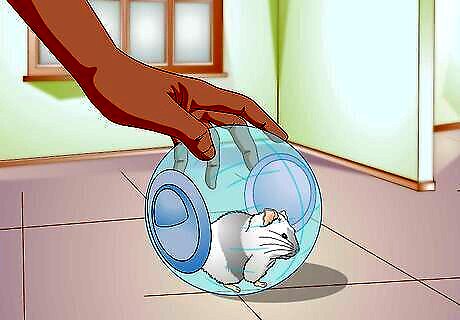
Get a hamster ball! Hamsters can safely and easily roll around in a hamster ball. Hamster balls are quite literally designed to allow your hamster to safely roam outside of their cage. You can use a hamster ball inside, or in a protected outside area like a patio. Only allow your hamster to run in its ball on carpeted ground, as they may roll dangerously quickly on harder ground. Never leave your hamster in its ball for more than twenty minutes. Only put your hamster in a ball once a day. Always monitor your hamster when it’s in a hamster ball. Keep other pets away from the hamster ball. Make sure the hamster ball is large enough for your hamster that it is not hurting its back. A common mistake hamster owners make is getting a ball that forces their hamsters to arch their back, which can make them uncomfortable without you realizing.
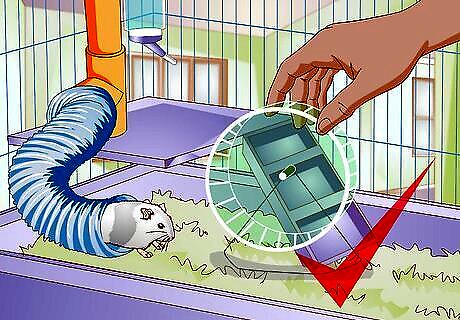
Place toys inside your hamster’s enclosure. Your hamster will get plenty of exercise inside its cage. To get them running around, provide your hamster with toys. Aside from running, hamsters also love to climb and chew. Choose climbing structures and chew toys meant for hamsters from your local pet store or online. A hamster wheel is a great mandatory feature for your hamster cage, providing both amusement and exercise. Many climbing structures will have similar moving features that will safely entertain your hamster for hours on end.




















Comments
0 comment